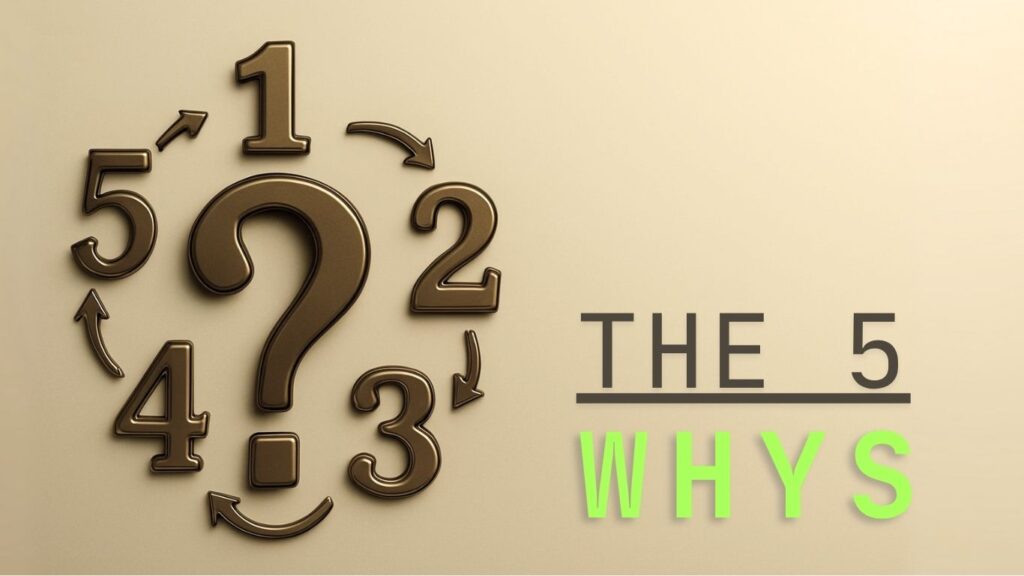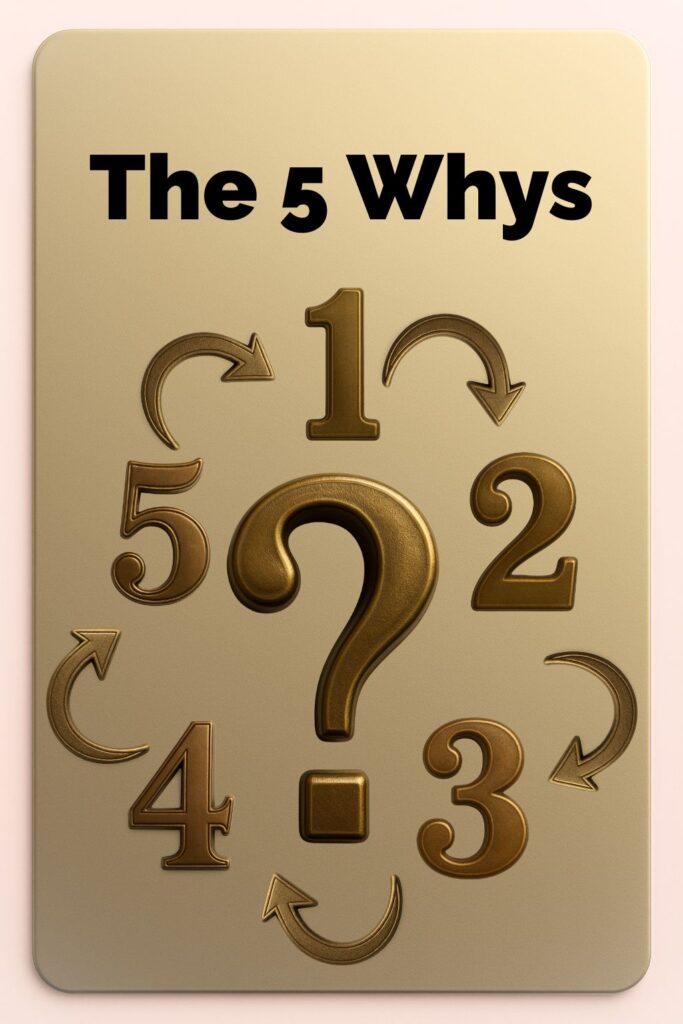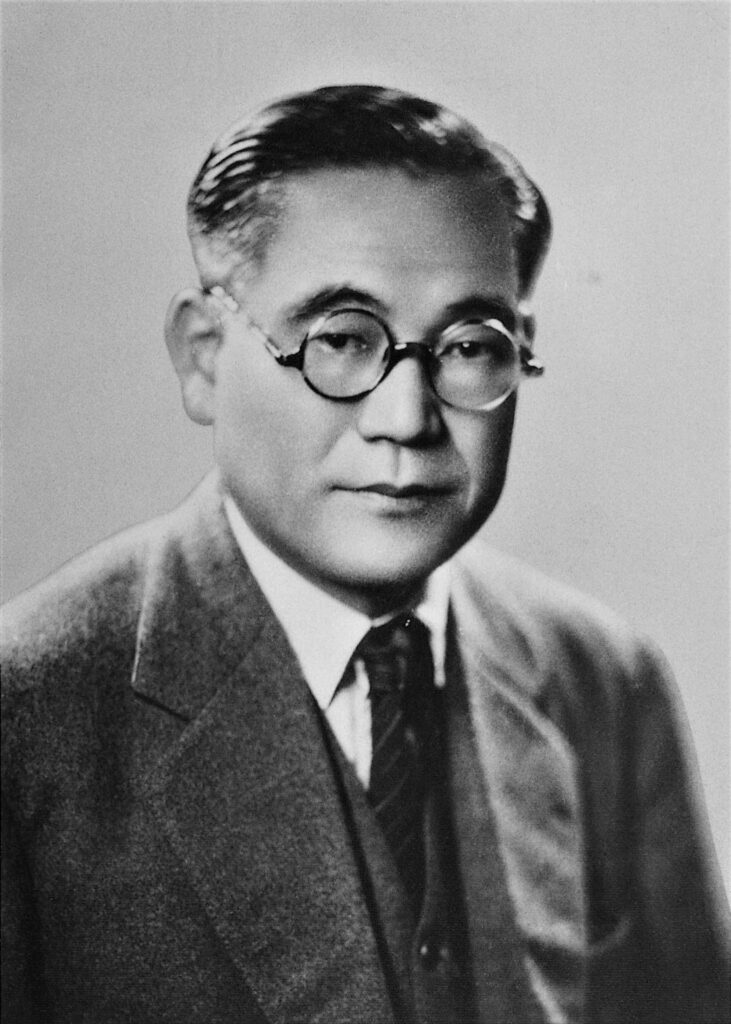Win at Life
What it is
The Five Whys is one of those annoyingly clever tools that’s almost too simple for how effective it is.
You simply ask “Why?” again and again – usually five times, until you land somewhere more useful. That ‘somewhere’ is often deeper, more accurate, and far more helpful than the ‘neat’ explanation you started with.
It came from the Toyota factory floor
(thanks to Sakichi Toyoda, the inventor who founded the company).
While it’s a staple in engineering, it’s arguably better known now as a personal development tool, still.
You’ll find it in coaching sessions, therapy rooms, leadership trainings, WhatsApp voice notes with friends, anywhere people are trying to make sense of fog, chaos or feeling stuck.
What it is – and why it’s useful
The issue is never the issue. Well, almost never. Surface-level answers are rarely the whole story. In hypnosis, we often say, “The issue is never the issue.” The presenting problem is almost always just the top layer. The real work starts once you begin peeling those back.
I’m thinking of a client who struggled to give up smoking. With some carefully chosen probing questions, she realised that going out for some fresh air and a ciggie was the only peace, quiet, and change of scenery that she got during the day – which is a very different issue.
When something feels off, our first explanation can sometimes be too tidy, too blamey, or too shallow. The five Whys gives you a way to gently and simply dig. Looking past the initial friction, you find the real belief, the fear, or the assumption sitting underneath. And if we’re getting a bit deeper, it can even be an unmet need, an outdated habit or even a bias that you didn’t realise that you had.
Data is everything. And once you’ve got this type of intel, it unlocks options.
The 5 Whys is a method that sits squarely in the domain of self-leadership, grown-up thinking, reflective decision-making, and responsible adulthood – which, let’s be honest, can be mildly infuriating when you’d rather vent about how hard, unfair, or outrageous something feels.
Instead of spiralling or outsourcing the answer, you ask better questions, and you start hearing your own clarity.
The 5 Whys quietly dismantles the polished defences we’ve built to survive.
It builds self-awareness, it sharpens decision-making and helps you respond like the kind of person your past self hoped you’d become.
You can use it on overthinking, procrastination, overwhelm, skipped workouts, decision dodging, resentment, burnouts – all that weird post-meeting spiral that leaves you questioning your whole life.
It’s self-examination with a spanner of truth.
And once you get the hang of it, it becomes strangely addictive and really quite liberating.
Some real-life examples
I keep missing my writing deadlines.
Why?
Well, I always start too late.
Why?
I tend to procrastinate until the pressure is on.
Why?
Um, that’s when I finally trust my ideas.
Why?
When I’m calm, my ideas never feel good enough.
Why?
Deep down, I still think productivity is the only thing that makes me valuable.
From missed deadlines to internalised capitalism in 5 easy moves.
Now you’ve got something you can actually work with.
I can’t seem to keep a regular gym routine going.
Why?
I just keep skipping it.
Why?
I often feel too tired.
Why?
I haven’t been sleeping very well.
Why?
I end up scrolling well into the night.
Why?
That’s the only time I get to myself.
So maybe it’s not about gym motivation.
Maybe it is boundaries, overstimulation, lack of help or loneliness.
That changes the whole picture.
I can’t seem to get organised planning and shopping for my food.
I keep dashing out to Tesco at the last minute, or worse, ordering Deliveroo a couple of times a week.
Why?
I keep running out of time.
Why?
Well, I often feel too tired to start on it.
Why?
My sleep has been awful.
Why?
I think I’m scrolling on my phone too late into the night.
Why?
Well, that’s the only time I get to myself.
So maybe it’s not about food prep, maybe it’s boundaries, overstimulation, or loneliness.
That changes the whole picture.
Try this today
Pick something that’s been getting under your skin, a habit that’s just not happening, a spot of self-sabotage, or a recurring irritation, and ask why 5 times – out loud, on paper, or in your head. it doesn’t matter.
It’s not about being unkind to yourself or beating yourself up. It’s just about being honest. If you get stuck, be forensic about what you’re assuming or avoiding, then give that a gentle prod. Sometimes the truth is sitting just beneath a story that you’ve got used to telling – or just isn’t true anymore.
Some things to think about
- Do you tend to accept the first answer you get, or do you look further?
- Are you solving the problem or just firefighting the symptoms?
- Are there rules that you’re unconsciously following that might not be yours?
- Is there a fear hiding somewhere under your frustration?
- What would become possible if you stopped believing that surface-level story or chose to rewrite it?
Optional challenge
Try the five Whys with someone that you trust. One of you plays the question asker, the other answers, and then you swap roles.
The rule: no fixing, no coaching, no rushing.
It is not an interrogation.
It’s just someone else helping you think out loud and organise your thoughts. Sometimes that’s all it takes to loosen a stuck belief or ‘bin-off’ a tired narrative.
Our Buddh-ish take:
“To understand everything is to forgive everything”
– ?? Buddha.
This isn’t about giving yourself a free pass.
It’s about taking a closer look at what’s really going on. The part under the performance, the story, the panic, or the polished excuse – and meeting it without flinching.
Not to wallow, but to see it properly.
When you get that part right, blame tends to fade. You stop casting yourself (or someone else) as the villain and start becoming the wise observer. Someone brave enough to investigate properly and then take action based on accurate information.
That’s often when the breakthrough happens. It doesn’t have to be a dramatic fireworks-level transformation. It could equally be quiet, solid progress that actually sticks.



